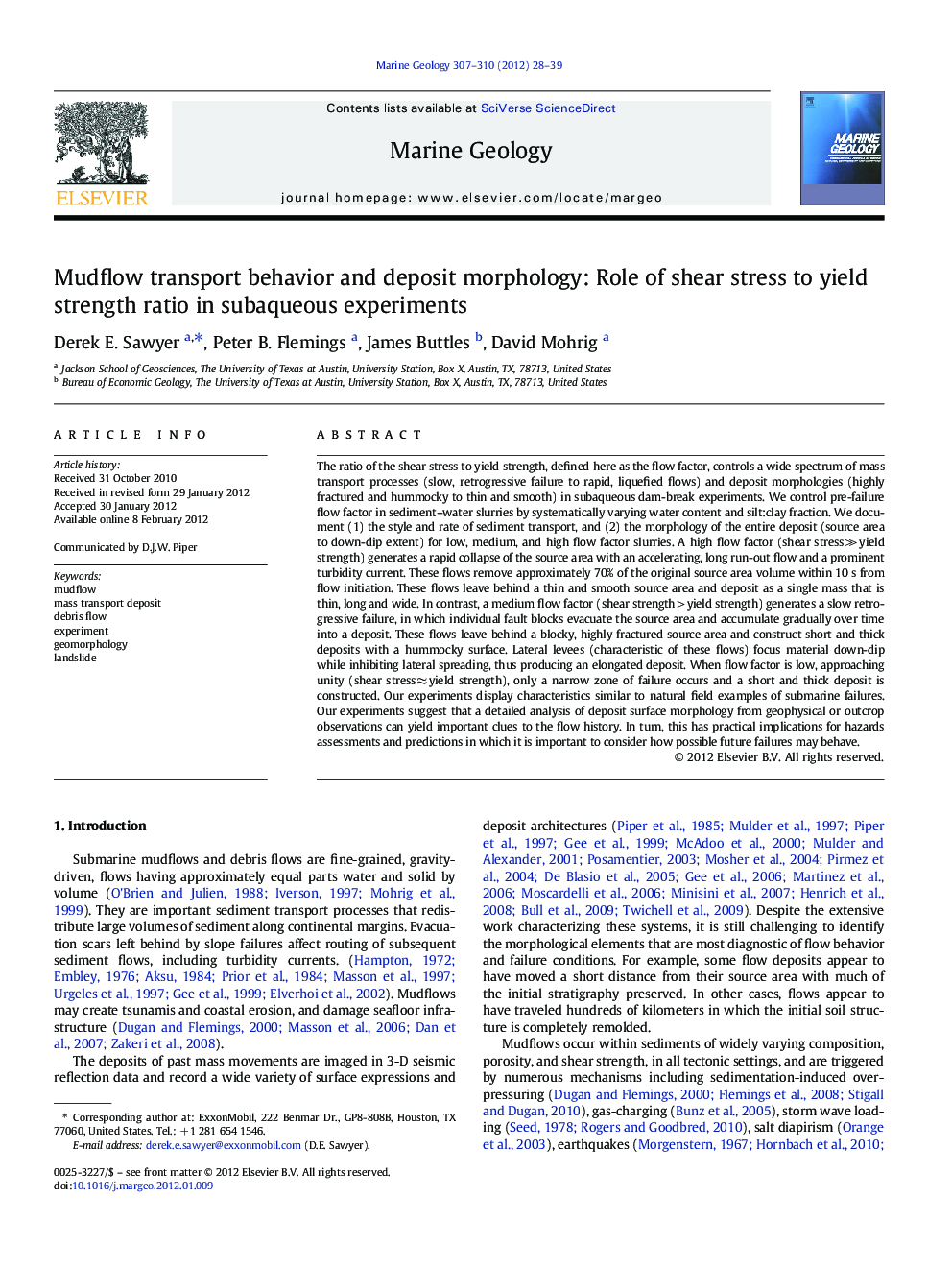| کد مقاله | کد نشریه | سال انتشار | مقاله انگلیسی | نسخه تمام متن |
|---|---|---|---|---|
| 4718563 | 1639125 | 2012 | 12 صفحه PDF | دانلود رایگان |

The ratio of the shear stress to yield strength, defined here as the flow factor, controls a wide spectrum of mass transport processes (slow, retrogressive failure to rapid, liquefied flows) and deposit morphologies (highly fractured and hummocky to thin and smooth) in subaqueous dam-break experiments. We control pre-failure flow factor in sediment–water slurries by systematically varying water content and silt:clay fraction. We document (1) the style and rate of sediment transport, and (2) the morphology of the entire deposit (source area to down-dip extent) for low, medium, and high flow factor slurries. A high flow factor (shear stress ≫ yield strength) generates a rapid collapse of the source area with an accelerating, long run-out flow and a prominent turbidity current. These flows remove approximately 70% of the original source area volume within 10 s from flow initiation. These flows leave behind a thin and smooth source area and deposit as a single mass that is thin, long and wide. In contrast, a medium flow factor (shear strength > yield strength) generates a slow retrogressive failure, in which individual fault blocks evacuate the source area and accumulate gradually over time into a deposit. These flows leave behind a blocky, highly fractured source area and construct short and thick deposits with a hummocky surface. Lateral levees (characteristic of these flows) focus material down-dip while inhibiting lateral spreading, thus producing an elongated deposit. When flow factor is low, approaching unity (shear stress ≈ yield strength), only a narrow zone of failure occurs and a short and thick deposit is constructed. Our experiments display characteristics similar to natural field examples of submarine failures. Our experiments suggest that a detailed analysis of deposit surface morphology from geophysical or outcrop observations can yield important clues to the flow history. In turn, this has practical implications for hazards assessments and predictions in which it is important to consider how possible future failures may behave.
► The ratio between shear stress and shear strength is termed the flow factor (Ff).
► Ff controls mass transport flow response and deposit morphology.
► Similar flows can be produced from very different lithologies when Ff is similar.
► Experiments are similar to natural submarine mass transport deposits.
► Deposit morphology is diagnostic of flow history and is a predictive tool.
Journal: Marine Geology - Volumes 307–310, 15 April 2012, Pages 28–39